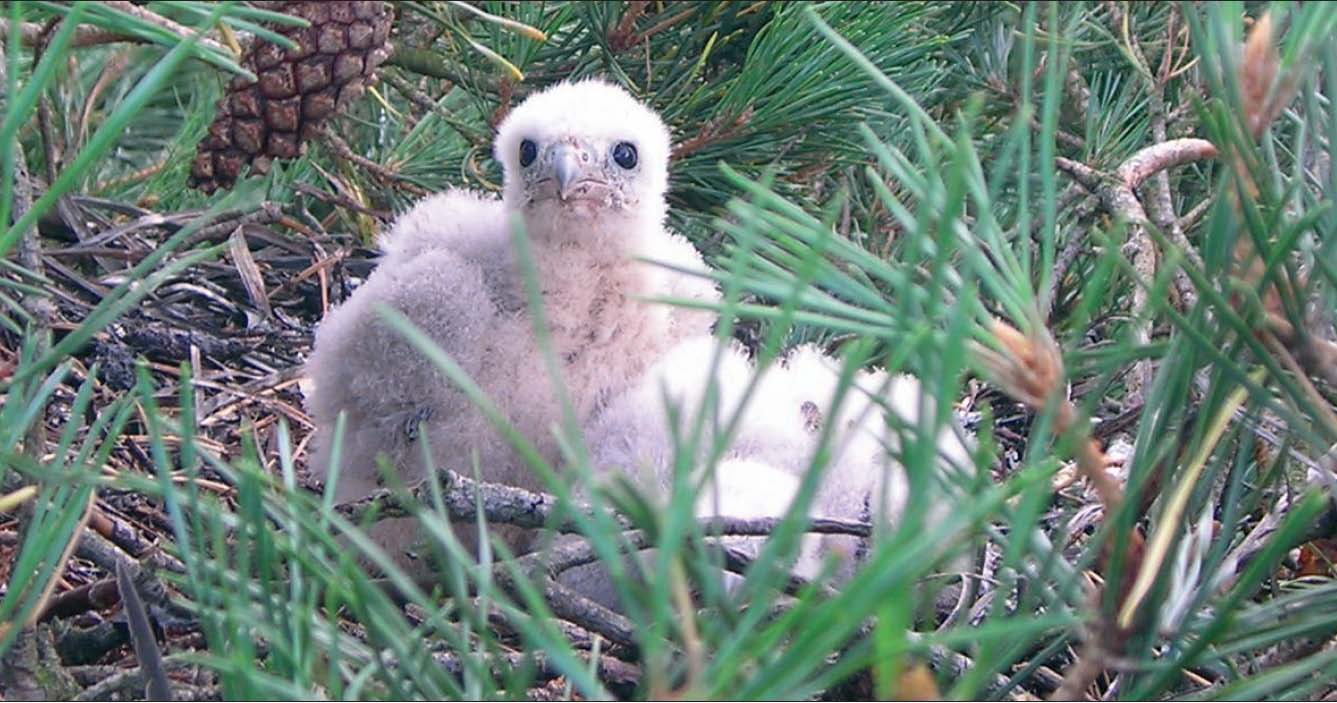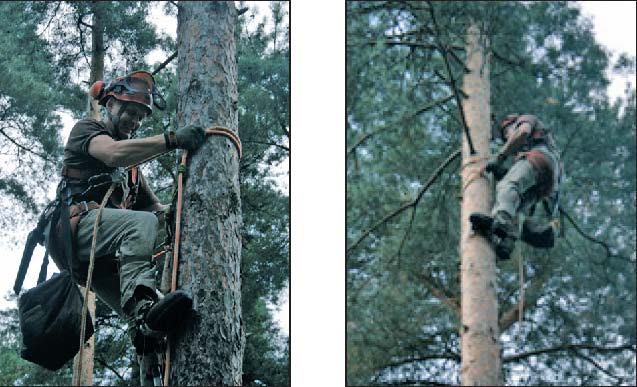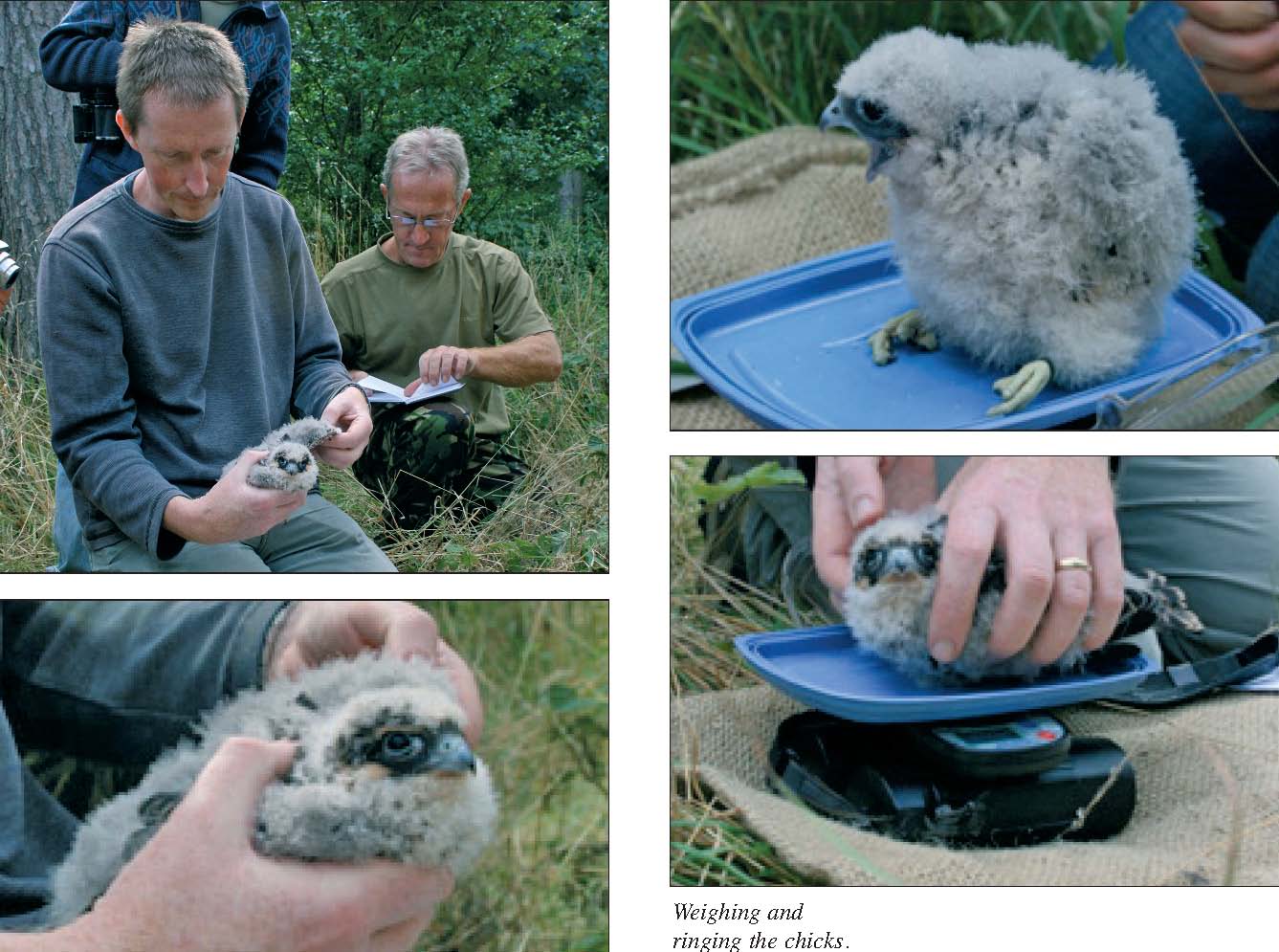Hobbies on the Stour

Young Hobbies in nest.
As a local tree surgeon with a rural round, there are a great many opportunities to see interesting flora and fauna, but there are two jobs that I really get excited about: the first is debudding cricket bat willows in the early summer along the Stour, not the most riveting work in the world but it gives me my first sightings of that most beautiful, and acrobatic of summer predators, the Hobby (falco subbuteo). The second is then acting as a climber for the British Trust For Ornithology [BTO], retrieving hobby chicks from their nests in order for the bird ringing team to weigh, measure, record and ring the chicks. The information obtained helps build a picture of the birds’ breeding success and status for that year.

Late spring and early summer sees the return of the hobby to the UK after wintering in Africa. The hobbies return usually coincides with that of swifts, swallows, and martins, which have also wintered in Africa and provide an important part of their diet and convenient food source along their migration.
Early summer finds me battling the nettled banks of the Stour to scrape the buds and shoots from bat willows to provide knot free timber for the manufacture of cricket bats. As I wander from tree to tree, may, damsel and dragonflies skim and hover over the water’s surface. Out of nowhere, and at the blink of an eye, a hobby on its scythe wings elegantly reaches out and plucks a damselfly from the air and consumes it on the wing. Bringing its prey to its beak, I get a full view of its distinctive red trousers, streaked chest, black moustache and slate grey wings; what a bird! At this time of year, several birds can be seen hunting along the Stour at any given time, and a great spot to see them is, over a pint, at the rivers edge at the Henny Swan.
Once the hobby has refuelled from its long migration, it gets down to the serious business of courting and finding a nest site. The hobbies’ courtship is one of aerial mastery: long soaring flights, male and female circling one another, the male stooping at the female, ending in a high speed aerial food pass.
Hobbies generally utilize abandoned crows’ nests, but sparrow hawk nests and even squirrel dreys are also used as nest sites. Three to four eggs are laid around the beginning of June, incubated for around twenty-eight days, and the nestlings fledge after a further 28-32 days. It is just before they fledge that I am brought in to help the ringing team obtain the chicks from the nest. Timing to ring the nestlings is critical so the chicks are developed enough to be rung but not too mature that they try to jump out of the nest.

Climbing up to the nest. . . nearly there. . .
Climbing to obtain the chicks for the ringing team is always very exciting. The bulk of the nests I climb to are up tall thin Scots pines in conifer plantations. The nest structures are generally old crows’ nests at around 70ft, and are always at the very top of the trees, which makes the climbing fairly hairy when you are 70ft up connected to limbs literally inches thick. As I climb through the main canopy to the nest, the chicks are usually silent, only emitting alarm calls when they see my head peering over them. The parents’ behaviour varies from absent; observing from a distance; to circling around me and having a jolly good look at the arboreal intruder. One climb in particular stands out. There was quite a breeze going by the time I had reached the nest. The old crows’ nest in which the hobbies had nested had been built on a curved leader, so I found myself 70ft up astride this curved leader with the wind rocking the tree top backwards and forwards, and me riding this leader like a horse. The chicks, emitting their usual alarm call as they were being handled, were plucked from the nest and sent down to the ringing team. The chicks’ alarm call brought the parents back to the nest to investigate what was amiss. They circled me, and with every pass they grew bolder and drew closer until the braver of the two birds, head on to the wind, was no more than a cap’s throw from my head: eye ball to eye ball, face to face with East Anglia’s cheetah of the sky; the highlight of my working year.
Once the ringing work is done, my last view of the hobbies before their return to Africa is back on the Stour, with them hunting young swallows, swifts and martins with awesome aerial agility. So, when you are next along the Stour, keep your eyes peeled for this remarkable bird and let yourself in for a real treat.
Joe Berens
Joe’s article throws a completely new light on the antics of a tree surgeon. If you want the top out of a tree, heights do not seem to bother him! Joe has kindly placed an advertisement in this magazine. Do support him if you need tree work undertaken.

Weighing and ringing the chicks.
